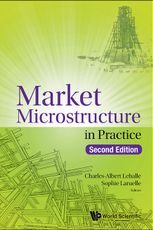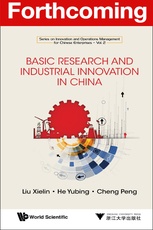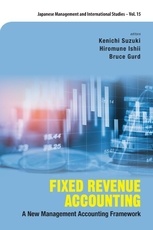
Market Microstructure in Practice (2nd Edition)
Authors : Charles-Albert Lehalle (Capital Fund Management, France & Imperial College London, UK), Sophie Laruelle (Université Paris-Est Créteil, France)
Publisher : World Scientific
ISBN : 978-981-3231-12-2
“Lehalle and Laruelle bring [their] experience to bear on every aspect of the discussion, as well as deep quantitative understanding. The resulting book is a unique mixture of real market knowledge and theoretical explanation. There is nothing else out there like it, and this book will be a central resource for many different market participants.”
-- Robert Almgren
President and Cofounder of Quantitative Brokers, New York
“Charles' and Sophie's book on markets microstructure will improve our knowledge and consequently help us to tweak these potentiometers. In promoting better education, this book is at the roots of restoring trust in the markets.”
-- Philippe Guillot
Executive Director, Markets Directorate
Autorité des marchés financiers (AMF), Paris
“This book provides a perspective on today's markets. It reviews institutional changes, discusses them, and provides color through real-world examples.”
-- Albert J Menkveld
Professor of Finance at VU University Amsterdam &
Research Fellow at TI-Duisenberg School of Finance
“Today, there is so much confusion on the actual functioning of capital markets, the impact of regulation, MiFiD in Europe and Reg NMS in the US, on market fragmentation and liquidity, the role of dark pools, of high-frequency traders in providing liquidity and bridging fragmented trading platforms. This book addresses all these demanding issues in a readable form. The authors are uniquely qualified, combining scholarly research backgrounds at the highest level of sophistication with extensive practical experience in designing best practice trading platforms. This book is a must-read for anyone with a serious interest in market microstructure.”
-- Michel Crouhy
Head of Research & Development at Natixis, Paris
“Market Microstructure in Practice — the title of this book reflects perfectly the intentions of the authors. Many academics treat market structure as if they are watching a football game — from the outside, commenting each player's actions and the consequences … missing the key operational points and leaving to management the final step between concepts and reality. For once we have here a detailed analysis of what ‘market microstructure’ means in practice for a manager willing to understand the business impact of fragmentation. Through detailed definitions and clarifications of the different roles of participants in the markets (lit as well as dark), the authors help the reader to navigate the complexity of European financial markets. The authors also provide their views about optimal organizations for a true ‘Best Execution’.
From an Exchange perspective, the book provides much useful information about the flip side of the coin; I mean here the fragmentation seen from the intermediaries' side. Usually managers of Exchanges and Trading venues view fragmentation ONLY as a threat and not as an issue faced by their customers, for whom they could provide solutions to make their markets efficient in the race for market share. In this respect, it is an invaluable tool for whoever is willing to embrace competition and see these tremendous changes in the landscape as an opportunity.”
-- Roland Bellegarde
Group Executive Vice President & Head of European Execution
NYSE Euronext, Paris
-- Robert Almgren
President and Cofounder of Quantitative Brokers, New York
“Charles' and Sophie's book on markets microstructure will improve our knowledge and consequently help us to tweak these potentiometers. In promoting better education, this book is at the roots of restoring trust in the markets.”
-- Philippe Guillot
Executive Director, Markets Directorate
Autorité des marchés financiers (AMF), Paris
“This book provides a perspective on today's markets. It reviews institutional changes, discusses them, and provides color through real-world examples.”
-- Albert J Menkveld
Professor of Finance at VU University Amsterdam &
Research Fellow at TI-Duisenberg School of Finance
“Today, there is so much confusion on the actual functioning of capital markets, the impact of regulation, MiFiD in Europe and Reg NMS in the US, on market fragmentation and liquidity, the role of dark pools, of high-frequency traders in providing liquidity and bridging fragmented trading platforms. This book addresses all these demanding issues in a readable form. The authors are uniquely qualified, combining scholarly research backgrounds at the highest level of sophistication with extensive practical experience in designing best practice trading platforms. This book is a must-read for anyone with a serious interest in market microstructure.”
-- Michel Crouhy
Head of Research & Development at Natixis, Paris
“Market Microstructure in Practice — the title of this book reflects perfectly the intentions of the authors. Many academics treat market structure as if they are watching a football game — from the outside, commenting each player's actions and the consequences … missing the key operational points and leaving to management the final step between concepts and reality. For once we have here a detailed analysis of what ‘market microstructure’ means in practice for a manager willing to understand the business impact of fragmentation. Through detailed definitions and clarifications of the different roles of participants in the markets (lit as well as dark), the authors help the reader to navigate the complexity of European financial markets. The authors also provide their views about optimal organizations for a true ‘Best Execution’.
From an Exchange perspective, the book provides much useful information about the flip side of the coin; I mean here the fragmentation seen from the intermediaries' side. Usually managers of Exchanges and Trading venues view fragmentation ONLY as a threat and not as an issue faced by their customers, for whom they could provide solutions to make their markets efficient in the race for market share. In this respect, it is an invaluable tool for whoever is willing to embrace competition and see these tremendous changes in the landscape as an opportunity.”
-- Roland Bellegarde
Group Executive Vice President & Head of European Execution
NYSE Euronext, Paris
This book exposes and comments on the consequences of Reg NMS and MiFID on market microstructure. It covers changes in market design, electronic trading, and investor and trader behaviors. The emergence of high frequency trading and critical events like the"Flash Crash" of 2010 are also analyzed in depth.
Using a quantitative viewpoint, this book explains how an attrition of liquidity and regulatory changes can impact the whole microstructure of financial markets. A mathematical Appendix details the quantitative tools and indicators used through the book, allowing the reader to go further independently.
This book is written by practitioners and theoretical experts and covers practical aspects (like the optimal infrastructure needed to trade electronically in modern markets) and abstract analyses (like the use on entropy measurements to understand the progress of market fragmentation).
As market microstructure is a recent academic field, students will benefit from the book's overview of the current state of microstructure and will use the Appendix to understand important methodologies. Policy makers and regulators will use this book to access theoretical analyses on real cases. For readers who are practitioners, this book delivers data analysis and basic processes like the designs of Smart Order Routing and trade scheduling algorithms.
In this second edition, the authors have added a large section on orderbook dynamics, showing how liquidity can predict future price moves, and how High Frequency Traders can profit from it. The section on market impact has also been updated to show how buying or selling pressure moves prices not only for a few hours, but even for days, and how prices relax (or not) after a period of intense pressure.
Further, this edition includes pages on Dark Pools, Circuit Breakers and added information outside of Equity Trading, because MiFID 2 is likely to push fixed income markets towards more electronification. The authors explore what is to be expected from this change in microstructure. The appendix has also been augmented to include the propagator models (for intraday price impact), a simple version of Kyle's model (1985) for daily market impact, and a more sophisticated optimal trading framework, to support the design of trading algorithms.
Using a quantitative viewpoint, this book explains how an attrition of liquidity and regulatory changes can impact the whole microstructure of financial markets. A mathematical Appendix details the quantitative tools and indicators used through the book, allowing the reader to go further independently.
This book is written by practitioners and theoretical experts and covers practical aspects (like the optimal infrastructure needed to trade electronically in modern markets) and abstract analyses (like the use on entropy measurements to understand the progress of market fragmentation).
As market microstructure is a recent academic field, students will benefit from the book's overview of the current state of microstructure and will use the Appendix to understand important methodologies. Policy makers and regulators will use this book to access theoretical analyses on real cases. For readers who are practitioners, this book delivers data analysis and basic processes like the designs of Smart Order Routing and trade scheduling algorithms.
In this second edition, the authors have added a large section on orderbook dynamics, showing how liquidity can predict future price moves, and how High Frequency Traders can profit from it. The section on market impact has also been updated to show how buying or selling pressure moves prices not only for a few hours, but even for days, and how prices relax (or not) after a period of intense pressure.
Further, this edition includes pages on Dark Pools, Circuit Breakers and added information outside of Equity Trading, because MiFID 2 is likely to push fixed income markets towards more electronification. The authors explore what is to be expected from this change in microstructure. The appendix has also been augmented to include the propagator models (for intraday price impact), a simple version of Kyle's model (1985) for daily market impact, and a more sophisticated optimal trading framework, to support the design of trading algorithms.
Currently Senior Research Advisor at Capital Fund Management (CFM), Charles-Albert Lehalle is an international expert in market microstructure and optimal trading. Formerly Global Head of Quantitative Research at Crédit Agricole Cheuvreux, and Head of Quantitative Research on Market Microstructure in the Equity Brokerage and Derivative Department of Crédit Agricole Corporate Investment Bank, he has been studying the market microstructure since regulatory changes in Europe and in the US took place. He provided research and expertise on this topic to investors and intermediaries from 2006 to 2013 and is Member of the Scientific Committee of the French regulator (AMF). He is often heard by regulators and policy-makers like the European Commission, the French Senate, the UK Foresight Committee, etc.
Currently Assistant Professor at Université Paris-Est Créteil (UPEC) and associated researcher at École Polytechnique (Paris), Sophie Laruelle defended her PhD in December 2011 under the supervision of Gilles Pagès on analysis of stochastic algorithms applied to Finance.
She contributes on market microstructure academic research, notably on optimal allocation among dark pools and on machine learning for limit orderbooks. She previously worked at École Centrale Paris on agent-based models and now she continues to work on applications of stochastic approximation theory, market microstructure, machine learning on big data, and statistics of stochastic processes.
Currently Assistant Professor at Université Paris-Est Créteil (UPEC) and associated researcher at École Polytechnique (Paris), Sophie Laruelle defended her PhD in December 2011 under the supervision of Gilles Pagès on analysis of stochastic algorithms applied to Finance.
She contributes on market microstructure academic research, notably on optimal allocation among dark pools and on machine learning for limit orderbooks. She previously worked at École Centrale Paris on agent-based models and now she continues to work on applications of stochastic approximation theory, market microstructure, machine learning on big data, and statistics of stochastic processes.
“Lehalle and Laruelle bring [their] experience to bear on every aspect of the discussion, as well as deep quantitative understanding. The resulting book is a unique mixture of real market knowledge and theoretical explanation. There is nothing else out there like it, and this book will be a central resource for many different market participants.”
-- Robert Almgren
President and Cofounder of Quantitative Brokers, New York
“Charles' and Sophie's book on markets microstructure will improve our knowledge and consequently help us to tweak these potentiometers. In promoting better education, this book is at the roots of restoring trust in the markets.”
-- Philippe Guillot
Executive Director, Markets Directorate
Autorité des marchés financiers (AMF), Paris
“This book provides a perspective on today's markets. It reviews institutional changes, discusses them, and provides color through real-world examples.”
-- Albert J Menkveld
Professor of Finance at VU University Amsterdam &
Research Fellow at TI-Duisenberg School of Finance
“Today, there is so much confusion on the actual functioning of capital markets, the impact of regulation, MiFiD in Europe and Reg NMS in the US, on market fragmentation and liquidity, the role of dark pools, of high-frequency traders in providing liquidity and bridging fragmented trading platforms. This book addresses all these demanding issues in a readable form. The authors are uniquely qualified, combining scholarly research backgrounds at the highest level of sophistication with extensive practical experience in designing best practice trading platforms. This book is a must-read for anyone with a serious interest in market microstructure.”
-- Michel Crouhy
Head of Research & Development at Natixis, Paris
“Market Microstructure in Practice — the title of this book reflects perfectly the intentions of the authors. Many academics treat market structure as if they are watching a football game — from the outside, commenting each player's actions and the consequences … missing the key operational points and leaving to management the final step between concepts and reality. For once we have here a detailed analysis of what ‘market microstructure’ means in practice for a manager willing to understand the business impact of fragmentation. Through detailed definitions and clarifications of the different roles of participants in the markets (lit as well as dark), the authors help the reader to navigate the complexity of European financial markets. The authors also provide their views about optimal organizations for a true ‘Best Execution’.
From an Exchange perspective, the book provides much useful information about the flip side of the coin; I mean here the fragmentation seen from the intermediaries' side. Usually managers of Exchanges and Trading venues view fragmentation ONLY as a threat and not as an issue faced by their customers, for whom they could provide solutions to make their markets efficient in the race for market share. In this respect, it is an invaluable tool for whoever is willing to embrace competition and see these tremendous changes in the landscape as an opportunity.”
-- Roland Bellegarde
Group Executive Vice President & Head of European Execution
NYSE Euronext, Paris
-- Robert Almgren
President and Cofounder of Quantitative Brokers, New York
“Charles' and Sophie's book on markets microstructure will improve our knowledge and consequently help us to tweak these potentiometers. In promoting better education, this book is at the roots of restoring trust in the markets.”
-- Philippe Guillot
Executive Director, Markets Directorate
Autorité des marchés financiers (AMF), Paris
“This book provides a perspective on today's markets. It reviews institutional changes, discusses them, and provides color through real-world examples.”
-- Albert J Menkveld
Professor of Finance at VU University Amsterdam &
Research Fellow at TI-Duisenberg School of Finance
“Today, there is so much confusion on the actual functioning of capital markets, the impact of regulation, MiFiD in Europe and Reg NMS in the US, on market fragmentation and liquidity, the role of dark pools, of high-frequency traders in providing liquidity and bridging fragmented trading platforms. This book addresses all these demanding issues in a readable form. The authors are uniquely qualified, combining scholarly research backgrounds at the highest level of sophistication with extensive practical experience in designing best practice trading platforms. This book is a must-read for anyone with a serious interest in market microstructure.”
-- Michel Crouhy
Head of Research & Development at Natixis, Paris
“Market Microstructure in Practice — the title of this book reflects perfectly the intentions of the authors. Many academics treat market structure as if they are watching a football game — from the outside, commenting each player's actions and the consequences … missing the key operational points and leaving to management the final step between concepts and reality. For once we have here a detailed analysis of what ‘market microstructure’ means in practice for a manager willing to understand the business impact of fragmentation. Through detailed definitions and clarifications of the different roles of participants in the markets (lit as well as dark), the authors help the reader to navigate the complexity of European financial markets. The authors also provide their views about optimal organizations for a true ‘Best Execution’.
From an Exchange perspective, the book provides much useful information about the flip side of the coin; I mean here the fragmentation seen from the intermediaries' side. Usually managers of Exchanges and Trading venues view fragmentation ONLY as a threat and not as an issue faced by their customers, for whom they could provide solutions to make their markets efficient in the race for market share. In this respect, it is an invaluable tool for whoever is willing to embrace competition and see these tremendous changes in the landscape as an opportunity.”
-- Roland Bellegarde
Group Executive Vice President & Head of European Execution
NYSE Euronext, Paris
Buy this book, https://www.worldscientific.com/worldscibooks/10.1142/10739, 13575, false
FAQs
Click on the "Buy this book" button
You can email us at book-review@enago.com and we will get back to you with the next steps shortly.
New Releases
-

Advances in the Molecular Understanding of Colorectal Cancer
-

Basic Research and Industrial Innovation in China
-

Constable & Lim Colour Atlas Of Ophthalmology: Sixth Edition
-

Essentials of Ophthalmology: For Medical School and Beyond
-

Fixed Revenue Accounting: A New Management Accounting Framework
All featured publishers and authors can avail of a free promotional interview on Enago Academy! Write to us now!
